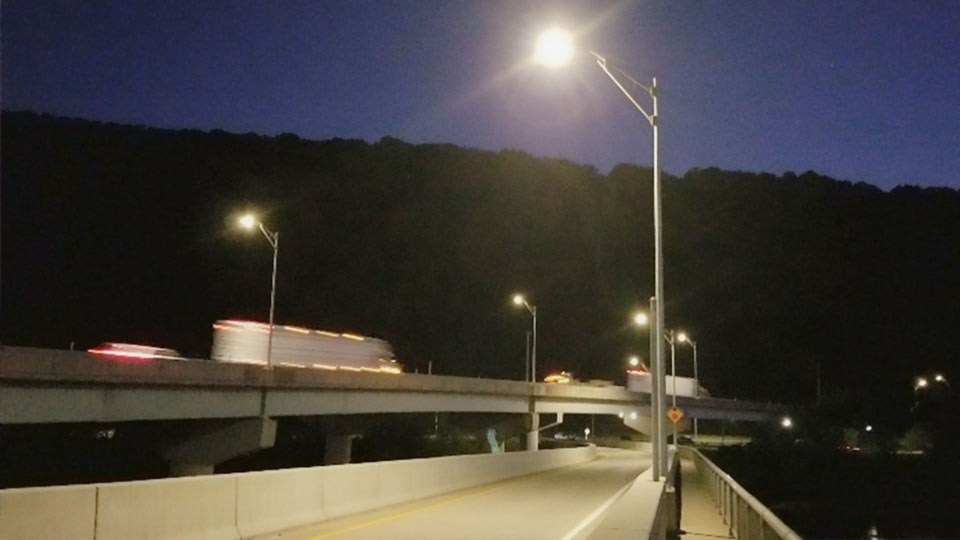Light-Emitting Diode (LED) Highway Lighting and Policy
LED lighting has an estimated life span of 20 years with a 10-year manufacturer guarantee. The innovation's pilot project used LED luminaires on the Clarks Ferry Bridge, carrying US 22/322 over the Susquehanna River, in Reed Township, Dauphin County. Since then, LEDs have been used on bridges across the state including on the Interstate 81 (George Wade) bridge and the Interstate 83 (John Harris) bridge over the Susquehanna River in the Harrisburg area. LED luminaires are now being used across the industry, as high-pressure sodium (HPS) luminaires are being produced less by manufacturers.
How Does It Work?
The Maintenance TAG evaluated the use of LED highway lighting luminaires over traditional HPS lighting luminaires, and promoted the use of LED luminaires on highways and bridges across Pennsylvania. This effort gives highway lighting designers another option to choose when scoping their projects for efficiencies, motorist safety, and community needs. The Maintenance TAG's work incorporated LED highway lighting specifications into
Publication 408 (PDF), PennDOT's current construction specifications. The Maintenance TAG was also able to get lighting manufacturers approved in
Bulletin 15 for future highway/bridge projects and local municipalities use.
What Are The Benefits?
Initial estimates show that overall cost efficiency of LED luminaires is about 30 percent when compared to traditional HPS luminaires. HPS luminaires need to be changed and cleaned every three years, with the maintenance of LED luminaires only requiring lens cleaning with no cyclical replacement. LED and HPS luminaires cast the same amount of light; the difference between the two is in the color of the light. LEDs cast a white light that appears brighter to motorists than the orange light cast by HPS luminaires. LED luminaires also better penetrate fog.

Innovation in Motion
Ferguson Township in Centre County, like many other municipalities, has put this innovation into practice by replacing their high pressure sodium HPS luminaires with LED luminaires along township roadways. As one of the first municipalities to pursue the use of LEDs, the township initially installed LEDs at four of the township’s 20 signalized intersections, and continues to install LEDs at the remaining intersections. The township is now using its own crews to install or replace LED traffic signals and are contracting out additional LED light work. They are working with contractors to develop lighting diagrams and are taking light readings to determine the optimum time to replace lights. Township officials hope the use of LEDs will lead to less maintenance and cleaning, more evenly distributed light, and less energy consumption.
DID YOU KNOW... LED luminaires are also used in traffic signals? PennDOT's
Green Light-Go program awards up to $40 million annually for traffic light improvements to local municipalities and planning organizations — LED replacement being one of them.
More Information
For more information about this innovation, contact the
STIC Management Team.